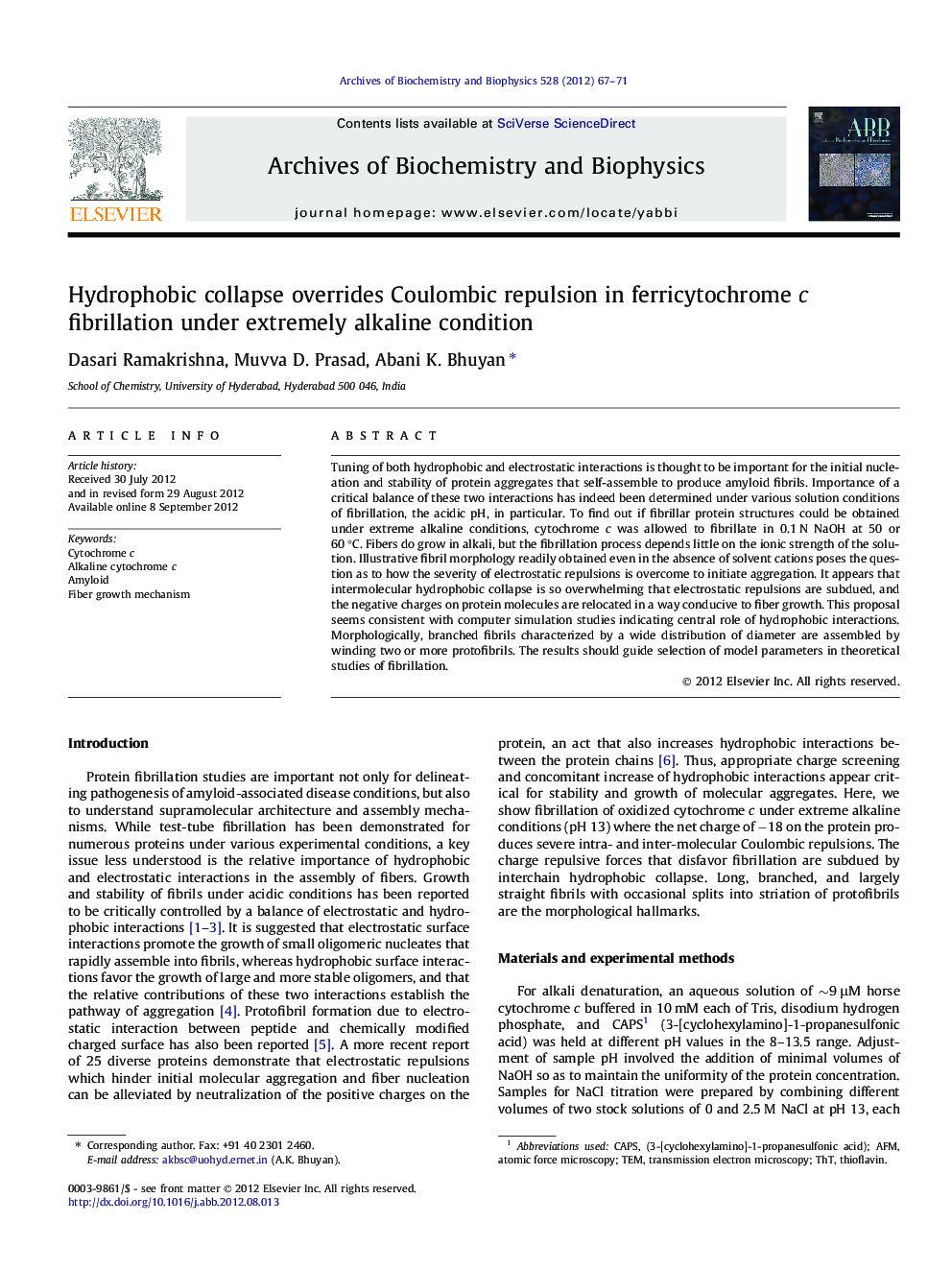| Article ID | Journal | Published Year | Pages | File Type |
|---|---|---|---|---|
| 1925492 | Archives of Biochemistry and Biophysics | 2012 | 5 Pages |
Tuning of both hydrophobic and electrostatic interactions is thought to be important for the initial nucleation and stability of protein aggregates that self-assemble to produce amyloid fibrils. Importance of a critical balance of these two interactions has indeed been determined under various solution conditions of fibrillation, the acidic pH, in particular. To find out if fibrillar protein structures could be obtained under extreme alkaline conditions, cytochrome c was allowed to fibrillate in 0.1 N NaOH at 50 or 60 °C. Fibers do grow in alkali, but the fibrillation process depends little on the ionic strength of the solution. Illustrative fibril morphology readily obtained even in the absence of solvent cations poses the question as to how the severity of electrostatic repulsions is overcome to initiate aggregation. It appears that intermolecular hydrophobic collapse is so overwhelming that electrostatic repulsions are subdued, and the negative charges on protein molecules are relocated in a way conducive to fiber growth. This proposal seems consistent with computer simulation studies indicating central role of hydrophobic interactions. Morphologically, branched fibrils characterized by a wide distribution of diameter are assembled by winding two or more protofibrils. The results should guide selection of model parameters in theoretical studies of fibrillation.
► Amyloid fibrillation requires balanced hydrophobic and electrostatic interactions. ► But, fibrillation of cytochrome c in 0.1 N NaOH responds little to ionic strength. ► Highly branched fibrillar structures arise from intertwining of splayed protofibrils. ► Fibrillation unaided by cations underscores the importance of hydrophobic collapse. ► Dominance of hydrophobic forces over electrostatic conforms to theoretical finding.
